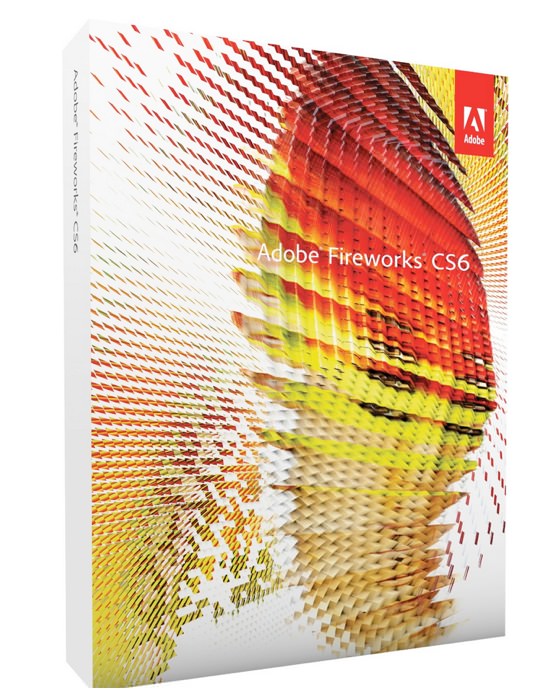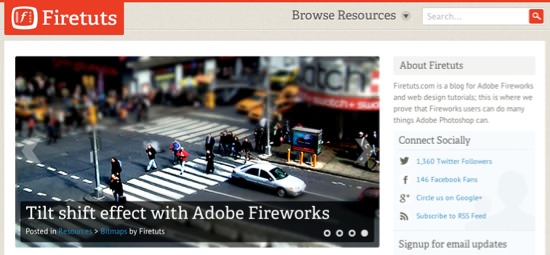The Fireworks Lament [IMHO]
A few days ago Adobe caused an outcry with its announcement to not develop Fireworks, their web design prototyper, further. Though they did not really call it quits, instead promised to make sure Fireworks would receive necessary updates in terms of security or OS adaptation, furious users started their campaigns to „save Fireworks“ from oblivion. Even a petition has been started to try and force Adobe to release Fireworks as Open Source or in the alternative at least promise to not stop development. These things are nothing new. Softwares come and go.

The Evolution of Web Design Software
In the nineties, Macromedia introduced a clever tool for web designers. The tool was named Fireworks and its abilities where mostly aimed at creating image-rich static website designs. Animated gifs where hot at the time and Fireworks would let you build them in the easiest way possible. Hover states with different images were a snap with Macromedia’s tool. Yet, already at that time, Fireworks was never able to reach the same level of attention and wide-spread usage Dreamweaver, the second important Macromedia product, was able to achieve.
I admit to have been one of the early adopters. I have been using Fireworks and really designed and exported lots of websites or parts thereof. I made a decent amount of money in the shortest time possible, compared to other techniques I could have used. But this was at that time. The web was all colorful and flashy. If you could design a UI where e.g. a phone would visually be picked up on hover you could call yourself the king of designs. And I sure felt that way.
Need I say that of course all Fireworks designs were based on tables, one-pixel gifs and absolute positioning?
Then, things started to change quite quickly. Accessible design was the new buzz, although up until today accessible design has not gained the traction you could expect given the time it is being talked about. The first time I encountered the new world of pure CSS was in 2001. I was interested, yet terrified as this would mean a totally different approach to design as I knew it. And certainly, Fireworks would no longer be the one-stop shop it had been until then.
Adobe, by the way, had already ramped up its Photoshop with a satellite solution called ImageReady, clearly aimed at users of Fireworks. ImageReady implemented the same way of cutting, slicing and creating different states of the same image Fireworks did. It came over a little uncomfortable though, as you had to design in Photoshop, then call ImageReady from there to do the necessary slicing and things and then, from ImageReady, leave again back to Photoshop. It wasn’t exactly what you’d call streamlined.
But, and that had me quick enough, it combined the powerful image editing capabilities of Photoshop with techniques needed in web design. Sliced images out of PS/ImageReady looked much more elegant than those done using Fireworks purely. It must have been around 2003 when I decided to stay with Dreamweaver, but leave for Photoshop.
Two years later, Adobe bought Macromedia and its product range. In favor of Dreamweaver they discontinued their own Go Live (2008) and in favor of Fireworks they discontinued their own ImageReady (2007). A lot of features of ImageReady got baked into the core of Photoshop, but the path was clear. Fireworks would be the new web designer tool. Need I mention, that there were outcries caused in both cases of discontinuation?
The web changed further. Still Photoshop or Fireworks designs were common, but more in the form of prototypes and not in the form of to be exported ready-made designs that would go live directly from the image editor.
Today, designs still get prototyped in Photoshop, Illustrator, InDesign, Fireworks or whatever product the designer sees fit, can handle or for whatever reasons prefers to use. Yet, today CSS is the top dog, the principles of print design, from where web design naturally evolved are more and more turned behind.
Today we all agree that web design has no longer a lot in common with print design. When Fireworks got incepted, this was totally different. You might object and argue that Fireworks got developed further and is now able to support CSS based designs and such. But this does not change the product’s roots, the reasons for its inception. And these roots are drying fast…
[caption id="attachment_76454" align="alignleft" width="550"] Dribbblers show off their Fireworks skills[/caption]
Dribbblers show off their Fireworks skills[/caption]
Deeply Shaken Fireworks Users Close To Tears
Now, as no surprise to me, Adobe announced the discontinuation of the Fireworks product. It is not that they will be axing it in the way Google will do to its Reader product. It is just that they will not put any perspective to it, feature-freeze you might as well call it. They will still sell it, they will provide security updates and they will make sure it runs on future OS versions as long as possible or technically sensible.
This is not what I would call a harsh move. Still, as always, an outcry gets caused. Why? Can we agree that the web will change further? From what we’ve seen in the course of the last fifteen years can we predict that web design will never return to print design principles? Is it not more likely to assume web design will heighten the distance to print rather than reduce it?
If we can agree on all of this, what is the bottom line? The bottom line is, softwares such as Fireworks will continue to be shrinking in importance. We will be using different tools for a subset of what still will be necessary related to our designs, but we can easily go without giant one-stop shop software bloated with features becoming more and more mediocre.
So where do we stand? If you love yourself your Fireworks, continue to use it as long as possible, which will be quite a few years from now. The better advice might probably be to look for new tools with a more contemporary approach. The best advice will be to focus on the skills that will never become irrelevant. I am talking about HTML, CSS and JavaScript. If you can handle these, no discontinuation notice of any software can ever become existence-threatening to your design business. Never rely on tools, rely on knowledge.
[caption id="attachment_76452" align="alignleft" width="550"] Firetuts.com: Fireworks Tutorials Galore[/caption]
Firetuts.com: Fireworks Tutorials Galore[/caption]
That said, I am ready to go off the stage and let other opinions enter. Greg Heade even started a campaign over at Change.org. He raised a petition in a try to find enough supporters to impress Adobe by the sheer numbers. His goal: Either open source Fireworks or promise to develop it further. In three days around 1,800 people signed it. If this does not gain more traction fast, I wouldn’t expect a lot of impact from it. So, if you are still drying your tears caused by Adobe’s announcement, head over to Change.org and sign Greg’s petition.
Greg runs Firetuts.com, so what would you expect ;-) Nevertheless, this is perfectly legitimate. Support him, if you agree.

Guys. I’ve been a avid Fireworks user myself for a decade. In fact my design team primarily uses Fireworks for not just prototyping but the layout of site and apps. Do we not like Photoshop? We do and it’s certainly powerful and we do use it for all our print work. BUT I have to comfortably say we can turn around layout/design comps at much higher rate in Fireworks than Photoshop. It’s just the right fit for what you need for web related design work.
Some are just too biased that Photoshop is the best of everything; Indeed it’s “the” tool of choice for most, but I think those that didn’t spend enough time using Fireworks have missed out on the speed and efficiency it brings for web work.
So I’m sad to hear it’s going to sleep, but not too worried. My staff uses Creative Cloud’s latest version; I’m using CS3 and still works great for most things and I could see myself using it at least another few years for what it does best or until Photoshop gives me the same efficiency as Fireworks has.
At end though I guess it comes down to what your most comfortable with.
I’m sorry to say the author of this post is not a professional full-time web designer, as I am. Fireworks is out and out the best tool for web design and ‘prototyping’ for large websites. It also is very good for creating an initial design, and then working out variations on it. And did I mention that it’s handling of vectors, bitmaps, and layers is simple, quick, and (nearly) elegant.
Compare it to Photoshop, which makes a visual designer go down the insane path of treating everything like it’s part of a photograph. Or illustrator, which is definitely the best one-page print design package since Adobe killed off Freehand. Fireworks is the nearest and best shot a web designer has at a piece of software that does it all.
Adobe’s decision to axe it is stupid, selfish, and short-sighted.
I imagine that inside Adobe there is a cadre of entrenched, die-hard Photoshop supporters, and they fight off any “challengers” to the Adobe crown.
Otherwise, this makes no sense at all.
Oh, of course, no professional and such. I could start asking for your age and we’d likely find out that you were wearing rubber boots walking around the christmas tree while playing little drummer boy, while I was already building websites. But, hey, why should I?!
” Fireworks is out and out the best tool for web design and ‘prototyping’ for large websites. It also is very good for creating an initial design, and then working out variations on it. ”
No, it’s not. See my posts above.
“which makes a visual designer go down the insane path of treating everything like it’s part of a photograph.”
I don’t like Photoshop either, but, no it doesn’t.
“Or illustrator, which is definitely the best one-page print design package”
No, it isn’t. Try Sketch.
This is simple really. The web changes, and the tools change with it. I agree with James Young, if your not excited about new tools such as Edge Reflow or even dare I say mobile app design tools like phone gap, your just stuck and will go the way designing with tables went.
” The best advice will be to focus on the skills that will never become irrelevant. I am talking about HTML, CSS and JavaScript. If you can handle these, no discontinuation notice of any software can ever become existence-threatening to your design business. Never rely on tools, rely on knowledge.”
That quote is pure gold. So much sense contained in those 4 sentences.
Of course image editing will always play a large role in web design and as such there will be a reliance on decent software. However I feel that the “but I can do a design comp in FW quicker than HTML/CSS!” arguments are more indicative of flaws in the process rather than the tools available.
What a shame, though this has been on the cards since Adobe bought out Macromedia in 2005, monopolies never benefit the consumer.
I’m an interface designer, and need to make rapid prototypes. I can’t live without fireworks. I deeply hate Adobe for EOL-ing Fireworks.